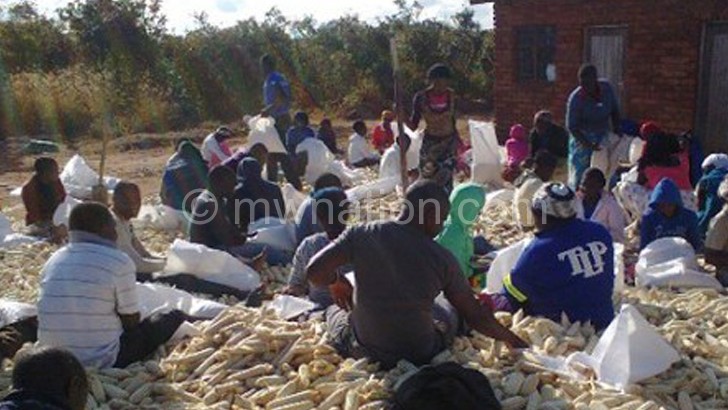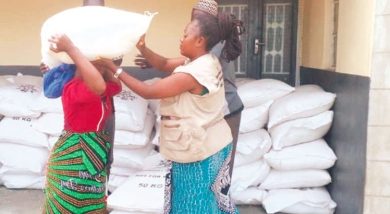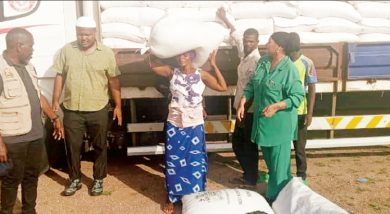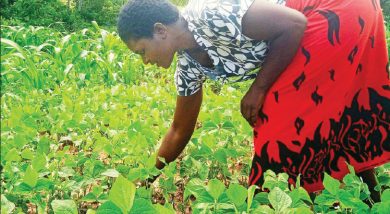Ray of hope
Despite a chaotic Farm Input Subsidy Programme (Fisp) and the attack of Fall armyworms, early crop estimates show that maize output this year is expected to jump by 35.9 percent to 3.2 million metric tonnes. This is against last year’s final round estimate of 2.3 million metric tonnes.
The first round of 2016/17 agriculture production estimates released yesterday by the Ministry of Agriculture, Irrigation and Water Development gives a glimmer of hope to an agro-based economy that has maize as the variable that moves inflation.

The good news comes against the background of the worst food shortage in nearly a decade when the country recorded a 30 percent drop during the 2015/2016 season putting about 6.5 million on the verge of starvation.
But the estimates show that output for tobacco—Malawi’s main foreign exchange earner—will drop by 36.6 percent while cotton production is expected to go up by 7.6 percent.
The ministry has since warned against excitement as the projections may “not conclusively inform the ultimate agricultural production” as they can only be ascertained after the third round estimates.
In an interview yesterday, the ministry’s principal secretary Erica Maganga said the estimates can change due to, among others, weather conditions, before the final round is done.
She said: “There is no need for too much excitement because at the moment most crops, especially maize, are at critical stage and within the season anything can happen and change the outlook.”
Chancellor College economist Ben Kaluwa said the estimates were good news to government as there will be a considerable relief on the impact of food on the national budget as government was subsidising the purchase of maize for the people.
He also observed that a good crop will also impact the national budget through the reduction in the importation of maize and the foreign exchange that was earmarked for the purchase of maize.
“If this remains unchanged, then we might be better off in terms of prospects for export earnings this year because we have other cash crops that have high demand abroad which could replace tobacco and bring some forex into the country,” he said.
But reacting to the tobacco output projections, executive director for Tobacco Association of Malawi (Tama) Lemson Chitawo said it was too early to make conclusions.
“These are just preliminary results. We don’t get our planning from this because things can change anytime because of weather pattern and you conclude now only to realise totally different figures later.
“But of course there is indeed low yield; the results will be devastating because tobacco remains the major forex earner and if no forex is coming into the country then certainly that will have an impact on the country’s economy,” he said.
However, Farmers Union of Malawi (FUM) president Alfred Kapichira Banda expressed surprise at the released estimates, arguing they do not represent the reality on the ground.
“Where has government taken these crop estimates? If they are just estimating from their offices that is fine but that is not the situation on the ground.
“Farmers are complaining. Generally, we may have had good rains so far but the problem was with the farm inputs which came late and most farmers have not benefitted from them. In most parts of the country, fertiliser came late and was also not enough so how do you expect them to have bumper yields,” queried Banda.
Retired principal secretary in the Ministry of Agriculture Andrew Daudi observed that the current estimates—though an improvement from the past years production—shows that the nation requirement of 3.8 million to four million metric tonnes per year will not be met.
Hesaid it was high time the country considered diversification.
“Look at the billions of kwacha that have been used to import maize. The good estimates are a breather to the stressed national budget. We have to treat each farming, crop and livestock as both cash and food crops,” he said.
On the dwindling of tobacco, Daudi said the main reduction was on burley tobacco which has been under attack lately, adding that it was important that the country start looking at alternative crops.
AHL Commodity Exchange communications manager Thom Khanje explained that the decrease in tobacco production is related to the poor markets that the farmers have been experiencing the past years and also the provision of markets for legumes.
“In our records we have over 4 500 farmers that were previous tobacco farmers and have since gone into legumes because they are now sure of the market,” he said adding that the quota allocation for tobacco farmers have an impact on the productions as well.
The released estimates also projected that rice production was expected to go up by 41.5 percent, sweet potatoes was projected to increase by 27.6 percent.
Agriculture Production Estimates Survey further estimated that millet and sorghum production was expected to go up by 118.6 and 79.3 percent respectively. The results also show that output of groundnuts, beans and pigeon peas was expected to increase by 22.2, 15.0 and 19.7 percent, respectively.
Apart from the drop in tobacco, wheat was also expected to drop by 6.4 percent while cotton was expected to go up by 7.6 percent.
The ministry also presented the status of livestock in the country which show the increase in cattle population from 1.4 million to 1.5 million, representing a 2.5 percent increase as compared to the final round for the 2015/16 agricultural season.
“The populations of goats and pigs have also increased by 5.0 percent and 14.6 percent. Fish production for capture fisheries has increased by 8.4 percent and aquaculture fish production has also increased by 46.7 percent. Overall, fish production has increased by 10.0 percent,” the ministry announced.
Malawi is an agro-based economy with the contribution of agriculture to the gross domestic product (GDP) hovering around 30 percent.





